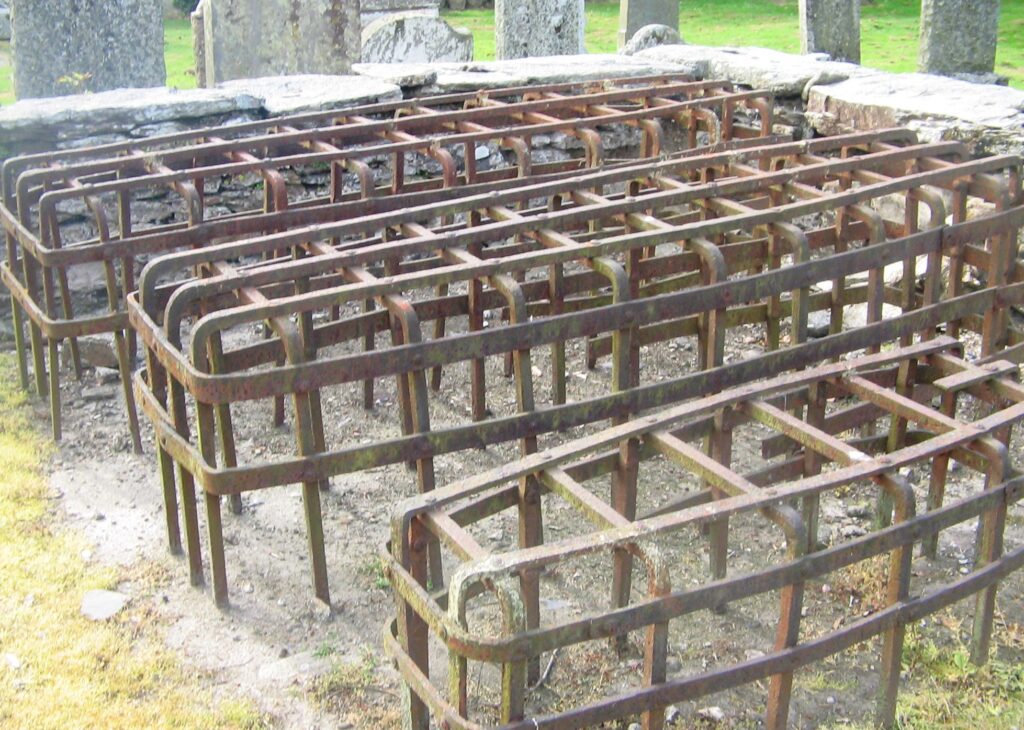During the 18th and 19th centuries, there was a huge demand for cadavers for medical schools. Scotland in particular became an epicentre for medical learning and research. However, there was a limited supply of cadavers available, as people were generally revolted by the idea of dissection. Additionally, the Murder Act of 1751 stipulated that those convicted of murder and other such heinous crimes would be dissected as an extra punishment following their execution. With this unsavoury association, it is little wonder that people were unwilling to donate bodies to medical science.
A Body Snatching Epidemic
With the influx of demand for cadavers, there was a huge spate of body snatching that led to the introduction of a number of measures to try and prevent it. Many graves around anatomy schools in Edinburgh, Glasgow and Aberdeen can be found today which are surrounded by iron cages, known as mortsafes. These were not, as some people believe, to keep the occupant at bay if they happened to rise from the dead, but to deter graverobbers from disinterring the deceased and selling their body off for dissection. The mortsafe typically consisted of iron bars, either in one piece or in sections which could be padlocked together to surround the coffin. Sometimes, a large stone slab would also be placed over the grave, ensuring that the body could not be accessed. Most mortsafes were temporary measures; after a few weeks the body would be too badly decomposed to be of any use to anatomists.

Body snatching caused particular outrage in Scotland, where some Christians believed that the dead would be unable to rise again with the Second Coming if their bodies were incomplete. Indeed, the Catholic Church specifically forbade dissection. This combined with the general reverence for the dead that somewhat typified the Victorian era meant that publicised cases of body snatching caused national outrage.
The Burke and Hare Case
Thanks to the introduction of mortsafes, graverobbing was becoming increasingly difficult. Some therefore graduated from stealing corpses to creating corpses themselves. In 1828, William Burke and William Hare, two Irish immigrants living in Edinburgh, were arrested on 16 counts of murder over the course of 12 months. It seemed that the two had been making a living selling cadavers to Robert Knox, one of the most imminent anatomical lecturers in Scotland. The pair had been luring unsuspecting victims to their homes, plying them with alcohol before smothering them to death.
Only Burke was found guilty of the murders, as Hare testified against him in exchange for immunity. Ironically, part of Burke’s punishment was public dissection, in accordance with the Murder Act of 1751. Huge crowds turned out to see the dissection, and almost caused a riot in order to gain access. Burke’s skeleton is on display at Edinburgh Medical School.
A Short-Lived Need
Mortsafes had quite a short run of popularity. After being invented in 1816, the Anatomy Act of 1832 meant that medical schools had a much easier time obtaining bodies via legal means, and grave robbing (and with it, the need for mortsafes) almost instantly died out. Many mortsafes were melted down or repurposed, though a few remain in churchyards throughout Scotland to this day.
Sources and Further Reading
https://www.abdn.ac.uk/bodysnatchers/mortsafes.php